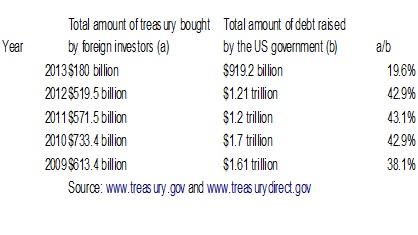The following email just popped into my mailbox. Have you ever received a similar email?
My Dearest Friend,
I am MR. PAUL ARUNA, The chief auditor in bank of Africa (boa) Burkina Faso West African, One of our customers, with his entire family was among the victims of plane crash and before his death, he has an account with us valued at $27.2million us dollars(twenty-seven million two hundred thousand us dollars) in our bank and according to the Burkina Faso law, at the expiration of Ten years if nobody applies to claim the funds a grace of one year also will be given before the money will revert to the ownership of the Burkina Faso government.
My proposals is that i will like you as a foreigner to stand in as the next of kin or distant cousin for us to claim this money, so that the fruits of this old man’s labour will not get into the hands of some corrupt government officials who will later use the money to sponsor war in Africa and kill innocent citizens in the search for political power.
As a foreign partner which this money will be transfer into your account, you are entitle to 40% of the total money while 55% will be for me as the moderator of this transaction and 5% will be mapped out for any expenditure that may be incur during the course of this transaction. Please note that there will be no problem as my bank has made all effort through to reach for any of his relation but all was fruitless.
My position as the chief auditor in this bank guarantees the successful execution of this (deal) transaction.
Please send the following:
1) Your full name…..
2) Sex…..
3) Age…..
4) Country…..
5) Passport or photo…..
6) Occupation…..
7) Personal Mobile number…..
8) Personal fax number…..
9) Home & office address…..
Thanks.
MR. PAUL ARUNA.
Chances are you receive an email along these lines almost everyday or maybe even more than one a day. Instead of a chief auditor, as is the case with the above email, you might get an email from the widow of a billionaire or a deposed prince. While the details might change, the overall theme of such emails continues to remain the same.
As Steven D Levitt and Stephen J Dubner write in Think Like a Freak—How to Think Smarter About Almost Everything “In each case, the author[of the email] has rights to millions of dollars but needs help extracting it from a rigid bureaucracy or uncooperative bank.”
And this is where you come in. You will need to share your bank-account information along with other personal information. This will help the sender of the email “to park the money in your account until everything is straightened out”. As Levitt and Dubner write “There is a chance you will need to travel to Africa to handle the sensitive paperwork. You may also need to advance a few thousand dollars to cover up some up-front fees. You will of course be richly rewarded for your trouble.”
Does any of this tempt you to reply to your email? Most of us delete such an email as soon as we see the subject of the email. We don’t even bother to read it, before it goes into the junk box of our email account. This fraud is known as the Nigerian letter fraud (even though the email that I share at the beginning of this article has come from Burkina Faso.)
In fact, this is a scam that has survived the test of time. “An early version was known as the Spanish Prisoner. The scammer pretended to be a wealthy person who’d been wrongly jailed and cut off from his riches. A huge reward awaited the hero who would pay for his release. In the old days, the con was played via a postal letter or face-to-face meetings; today it lives primarily on the Internet,” write Levitt and Dubner.
Since the advent of the internet, the Nigerian scam has taken on a life of its own. But the question is all these years later, when the scam is pretty well known, do people really fall for it? Further, why haven’t these scammers gone around fine tuning their story? Why does almost everyone who uses an email continue to get emails with the same basic “sob” story when it comes to the Nigerian scam? And why does almost every scammer who sends out an email claim to be from Nigeria or some other West African country?
Cormac Herley of Microsoft Research decided to investigate this question. As he asks it in a research paper titled Why do Nigerian Scammers Say They are from Nigeria? “An examination of a web-site that catalogs scam emails shows that 51% mention Nigeria as the source of funds, with a further 34% mentioning Cˆote d’Ivoire, Burkina Faso, Ghana, Senegal or some other West African country…Why so little imagination? Why don’t Nigerian scammers claim to be from Turkey, or Portugal or Switzerland or New Jersey?”
Stupidity can’t be an answer. As Herley puts it “Stupidity is an unsatisfactory answer: the scam requires skill in manipulation, considerable inventiveness and mastery of a language that is non-native for a majority of Nigerians. It would seem odd that after lying about his gender, stolen millions, corrupt officials, wicked in-laws, near-death escapes and secret safety deposit boxes that it would fail to occur to the scammer to lie also about his location. That the collection point for the money is constrained to be in Nigeria doesn’t seem a plausible reason either. If the scam goes well, and the user is willing to send money, a collection point outside of Nigeria is surely not a problem if the amount is large enough.”
So what can possibly explain this? The Nigerian (or any other West African for that matter) scammer carrying out this fraud needs to send out many emails initially. Hence, the cost of contacting a possible victim is very low. But at the same time his chances of getting hold of a possible victim who he can engage in a conversation over email, are also very low.
“An email with tales of fabulous amounts of money and West African corruption will strike all but the most gullible as bizarre. It will be recognized and ignored by anyone who has been using the Internet long enough to have seen it several times. It will be figured out by anyone savvy enough to use a search engine and follow up on the auto-complete suggestions…It won’t be pursued by anyone who consults sensible family or fiends, or who reads any of the advice banks and money transfer agencies make available,” writes Herley.
That being the case why go through so much trouble? The Nigerian sending the email cannot know in advance “who is gullible who is not?”. As Levitt and Dubner put it “Gullibility is in this case an unobservable trait.” So what explains this?
Herley provides the answer. As he writes “Those who remain are the scammers ideal targets. They represent a tiny subset of the overall population…The initial email is effectively the attacker’s classifier: it determines who responds, and thus who the scammer attacks (i.e., enters into email conversation with). The goal of the email is not so much to attract viable users as to repel the non-viable ones, who greatly outnumber them.”
To put it in simple English, the scammer essentially wants to identify individual(s) who haven’t heard o
f the Nigerian scam. As Herley told Levitt and Dubner “The scammer wants to find the guy who hasn’t heard of it…Anybody who doesn’t fall off their chair laughing is exactly who he wants to talk to.”
Such a gullible individual is most likely to send across thousands of dollars to someone he does not know based just on an email about a lost fortune. And this is why the Nigerian scam continues to look so do dumb. Its dumbness is what makes it so successful.
As Herley puts it in his research paper “A less outlandish wording that did not mention Nigeria would almost certainly gather more total responses and more viable responses, but would yield lower overall profit. Recall, that viability requires that the scammer actually extract money from the victim: those who are fooled for a while, but then figure it out, or who balk at the last hurdle are precisely the expensive false positives that the scammer must deter.”
The article appeared on www.firstbiz.com on August 17, 2014
(Vivek Kaul is the author of the Easy Money trilogy. He tweets @kaul_vivek)





